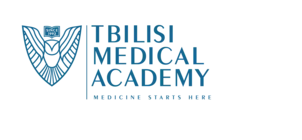School of Dermatoscopy and Dermatooncology
31th of May Petre Shotadze Tbilisi Medical Academy and The Georgian Association of Photodermatology and Skin Cancer (GAPSC) invites on the work-shop “School of Dermatoscopy and Dermatooncology” .
Short Description of the Event
The “School of Dermatoscopy and Dermatooncology” is a one-day intensive educational event, which is held within the framework of the annual pan-European campaign against skin cancer – Euromelanoma. The School is designed mainly for dermato-venereologists and oncologists involved in skin cancer prevention, diagnosis, and management and will be attended by 70 attendees.
The program combines theoretical knowledge with practical, case-based workshops led by renowned international experts in Dermoscopy, Dermatooncology and Skin Cancer Prevention from Georgia and abroad. It focuses on modern strategies in preventive dermato-oncology, the latest advances in dermatoscopic evaluation of melanocytic and non-melanocytic lesions, early melanoma recognition, and implementation of new WHO/EADO classification systems. Through interactive teaching methods, including audience polling, visual drills, and group diagnostics, the course aims to enhance clinical skills and promote best practices in dermato-oncological care.
Educational Needs
Needs Assessment Process:
The educational needs were identified through:
- Surveys of dermatologists and oncologists highlighting gaps in early melanoma detection and dermoscopic interpretation
- Review of recent literature emphasizing the importance of updated BCC classifications and AI integration in dermatoscopy
- Feedback from past Euromelanoma campaigns, revealing demand for practical training in preventive strategies and high-risk patient management
Derived Educational Needs:
- Advanced training in dermatoscopic features of melanocytic lesions, including early melanoma recognition
- Updated knowledge on WHO/EADO BCC classifications and their dermoscopic-pathological correlations
- Strategies for implementing primary and secondary skin cancer prevention in clinical practice
- Practical skills to integrate AI and total body mapping into real-world diagnostics
- Improved decision-making through interactive case analysis and error reduction techniques
Expected Educational Outcomes
- Enhanced Diagnostic Accuracy: Participants will confidently differentiate benign from malignant melanocytic lesions using advanced dermoscopic criteria, including early-stage indicators
- Early Detection Expertise: Recognition of micromelanoma features and systematic approaches to identify subclinical melanomas
- Integration of New Classifications: Application of the latest BCC subtypes with dermoscopic-pathological correlation for precise diagnostics
- Preventive Strategy Implementation: Adoption of evidence-based preventive measures (e.g., risk stratification, chemoprevention) in patient care
- Improved Clinical Decision-Making: Strengthened diagnostic skills through interactive case discussions, reducing errors and enhancing outcomes
- Language of instruction
- English
- Format of training
- On site
- Please refer to the detailed programme in the attached file
